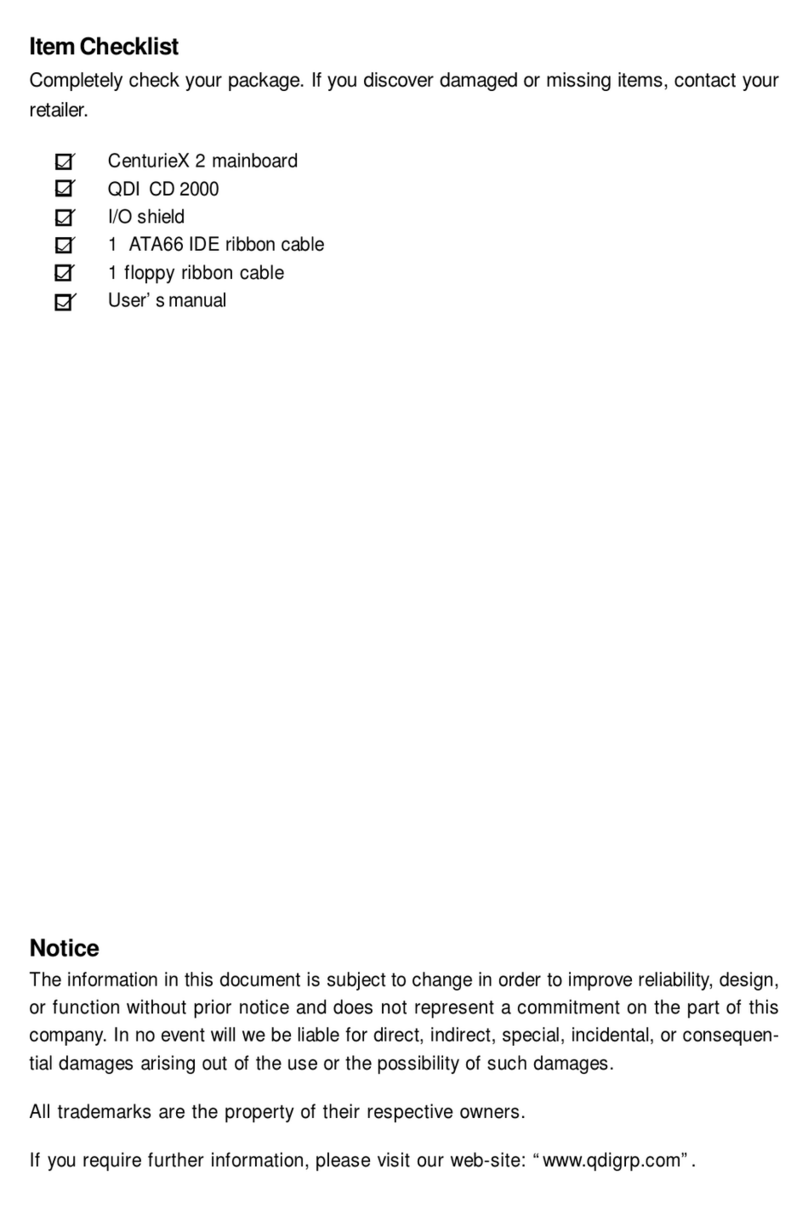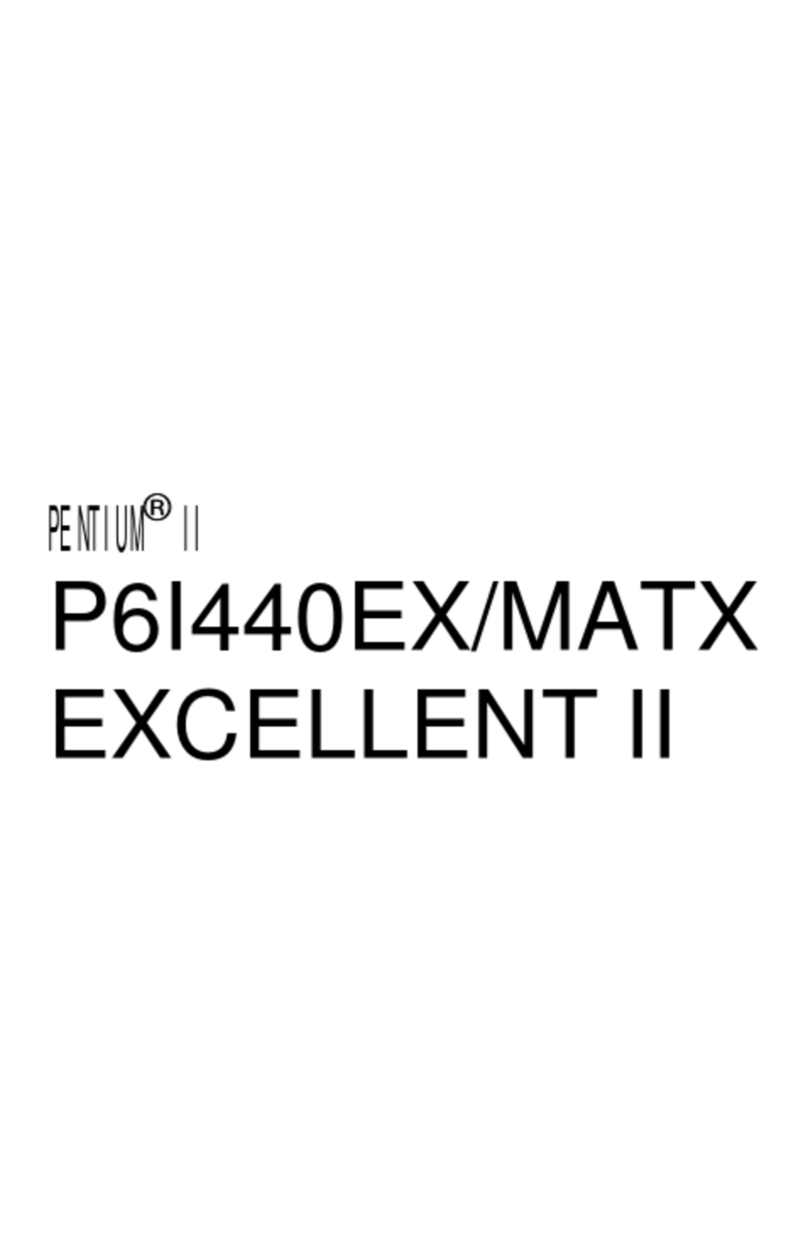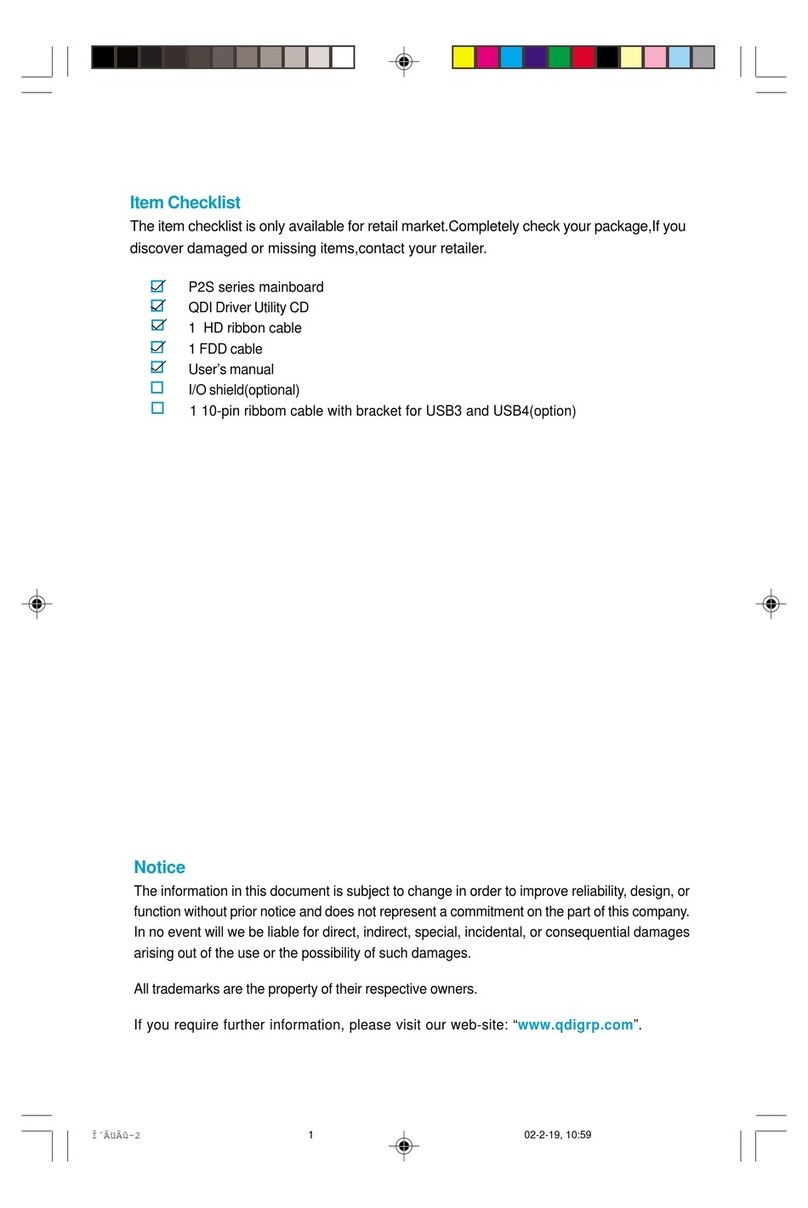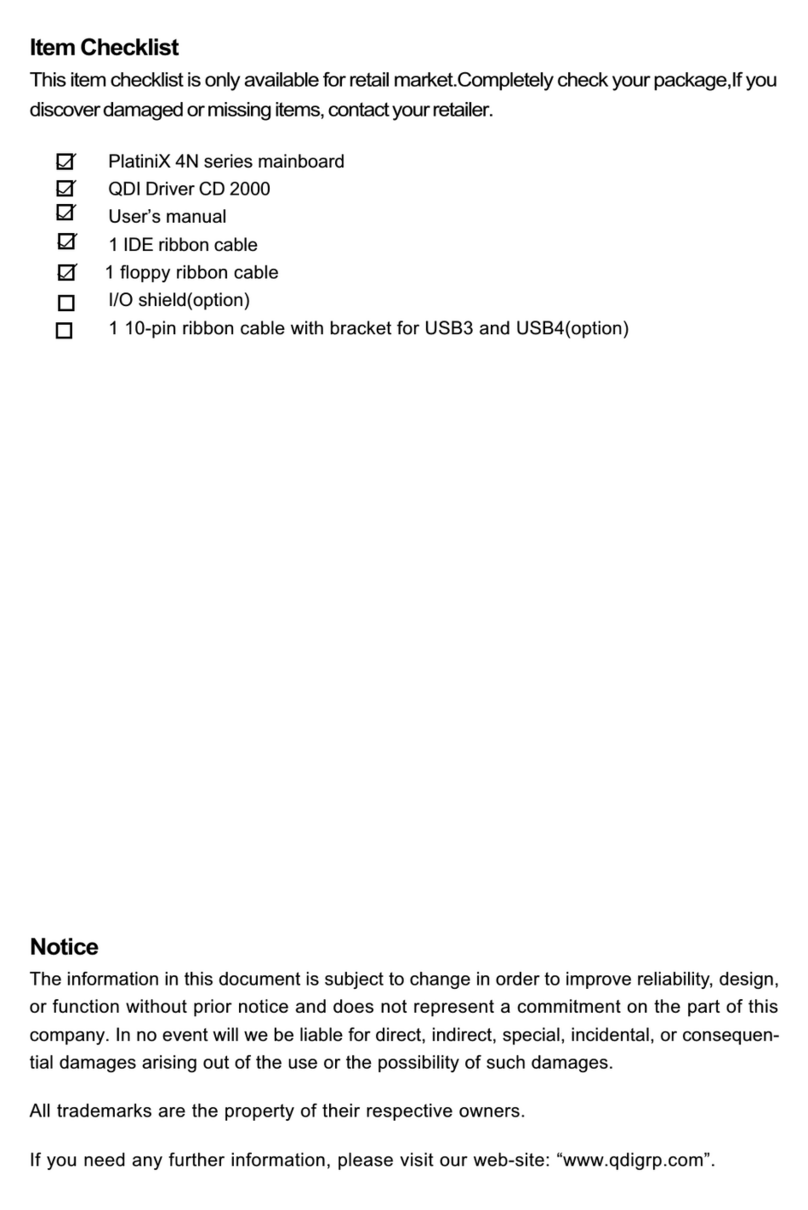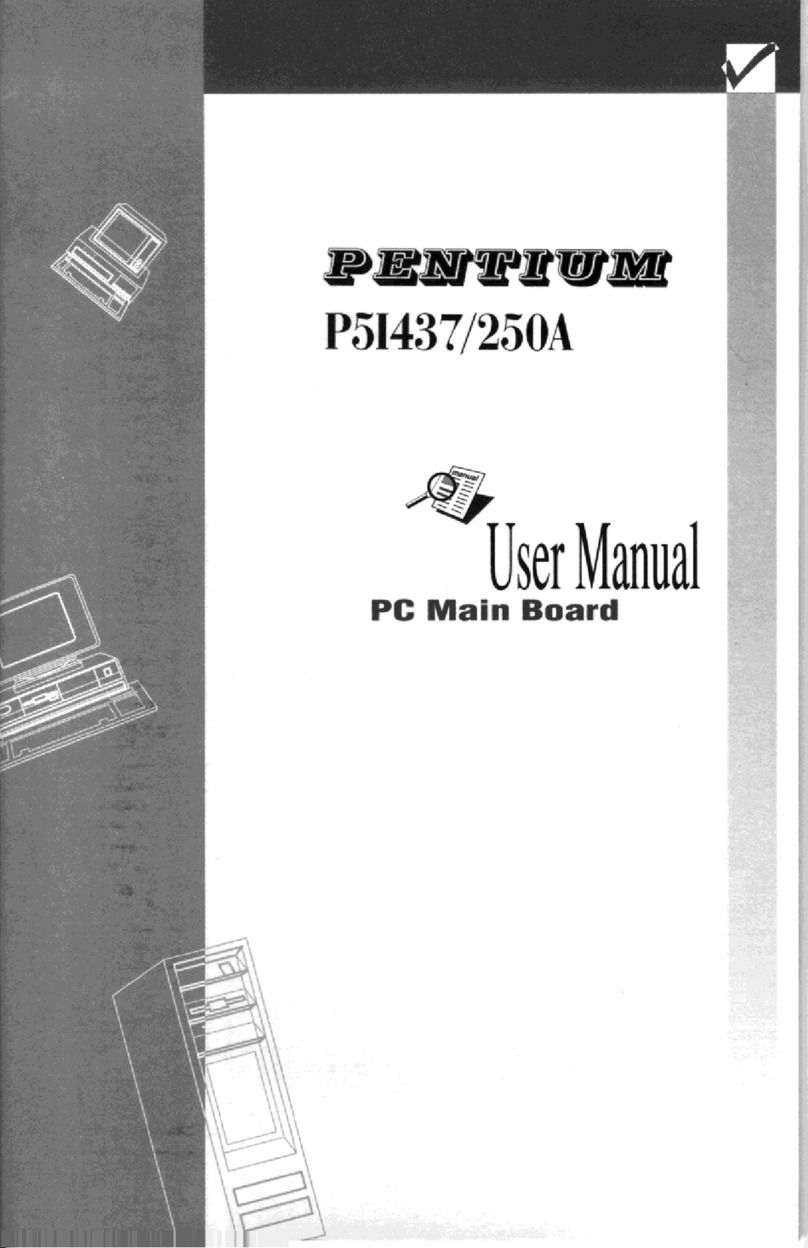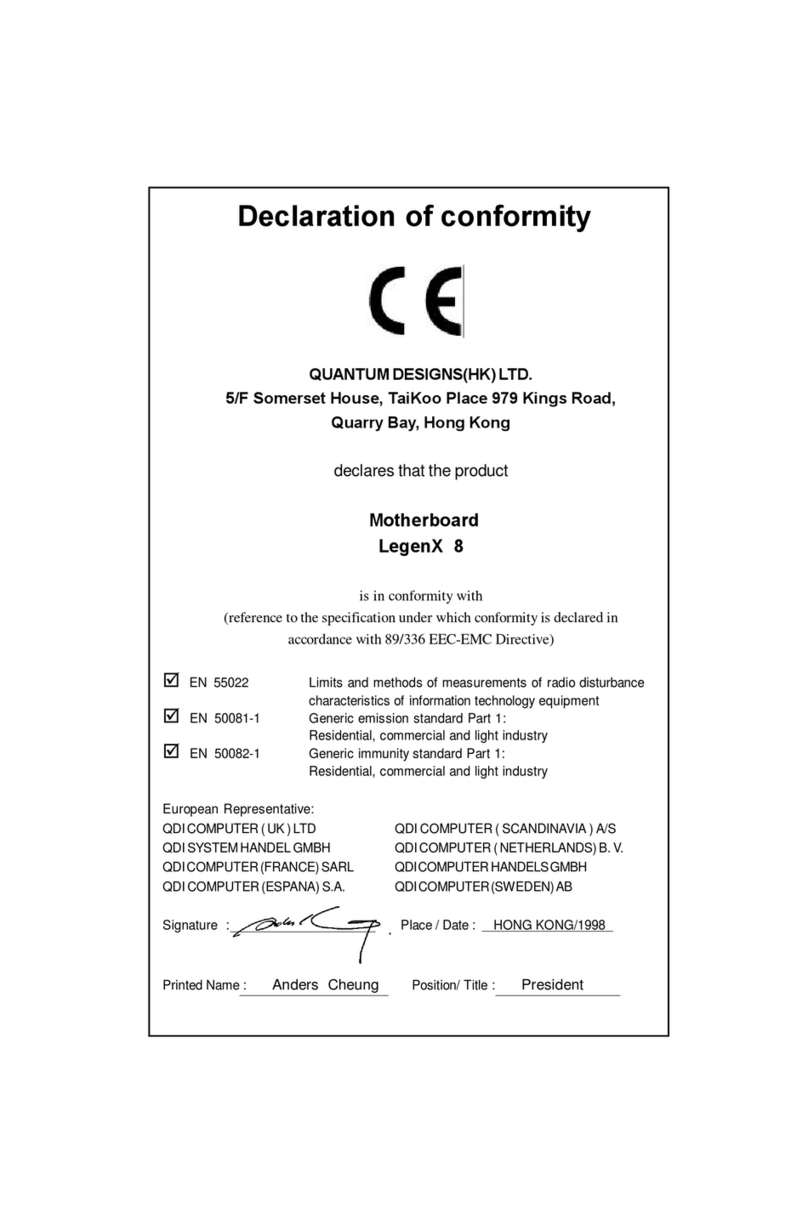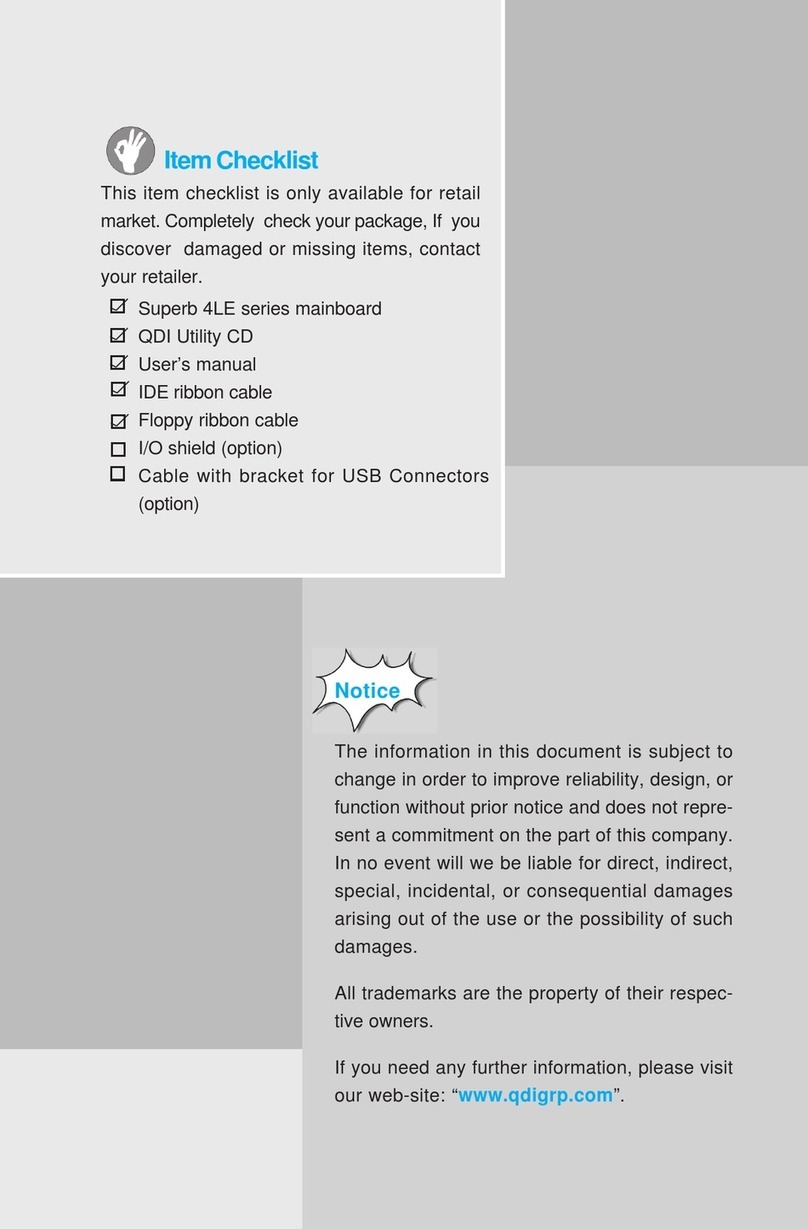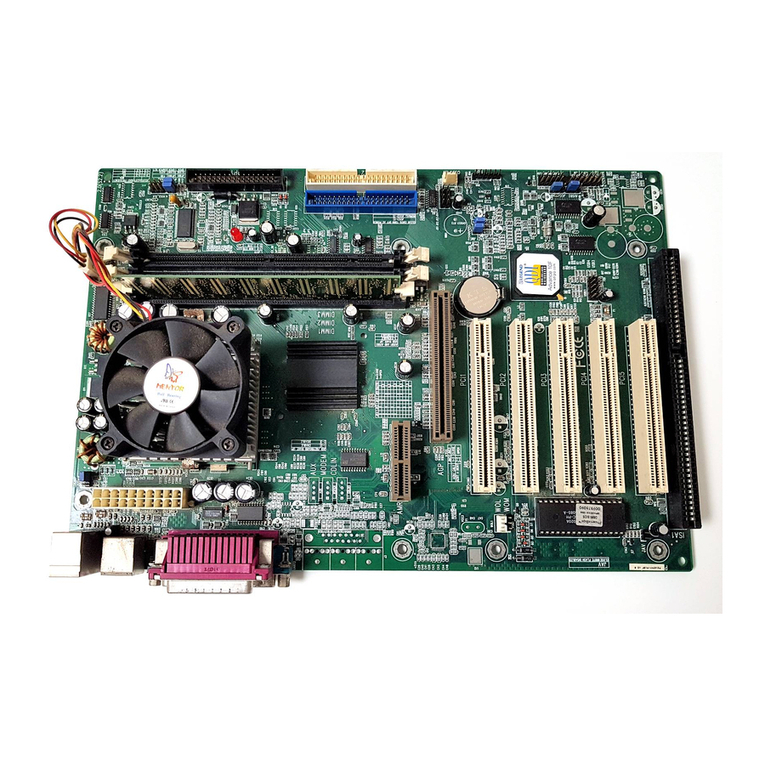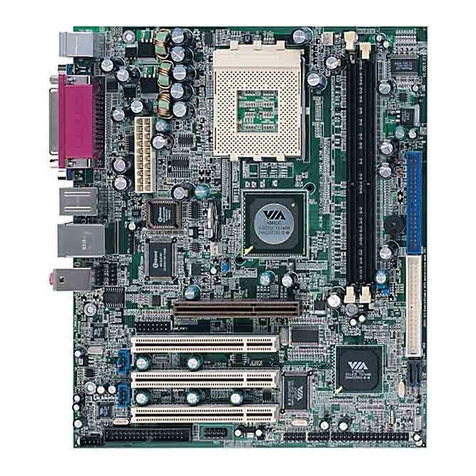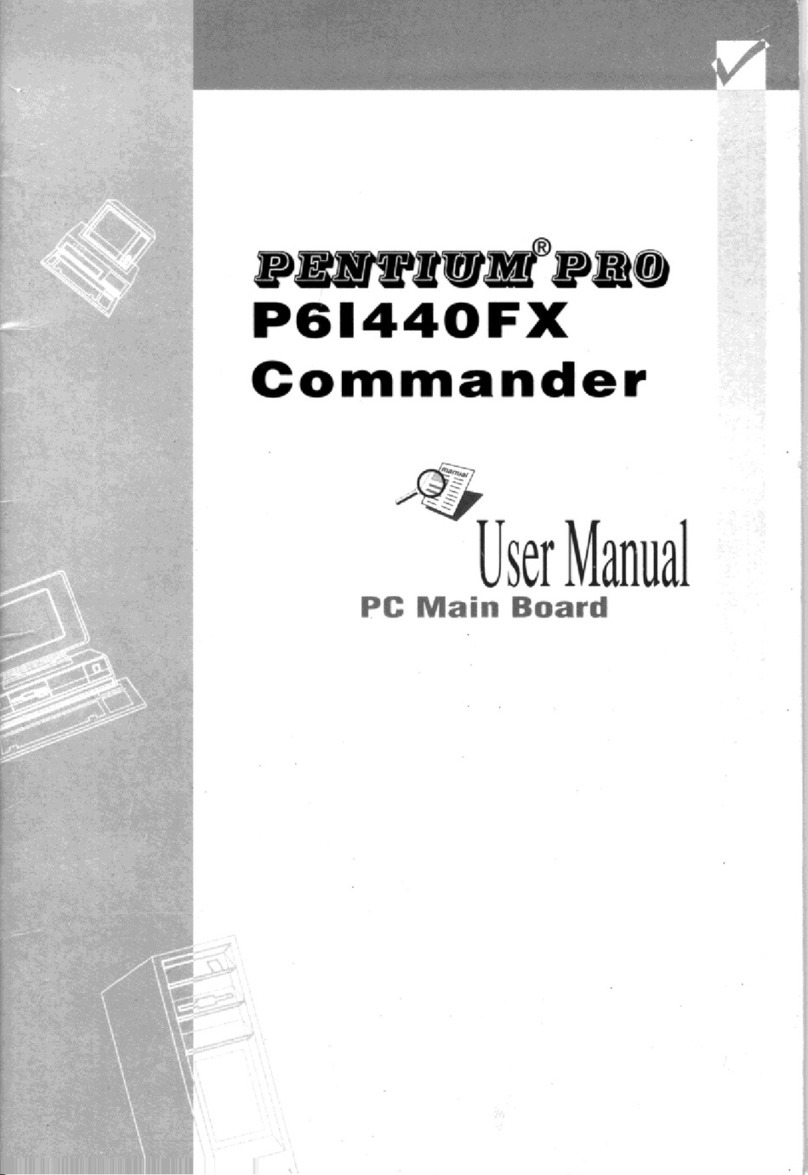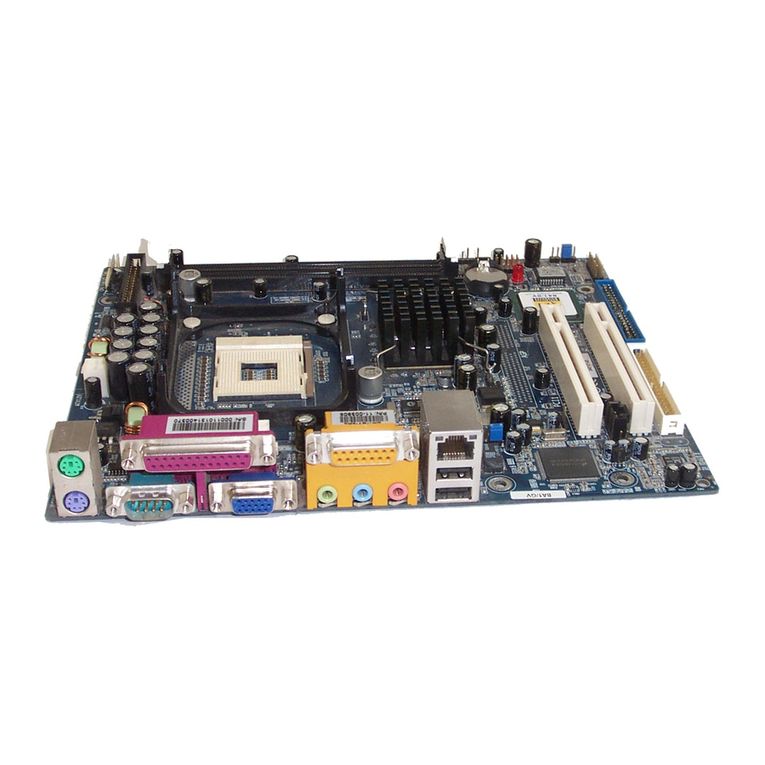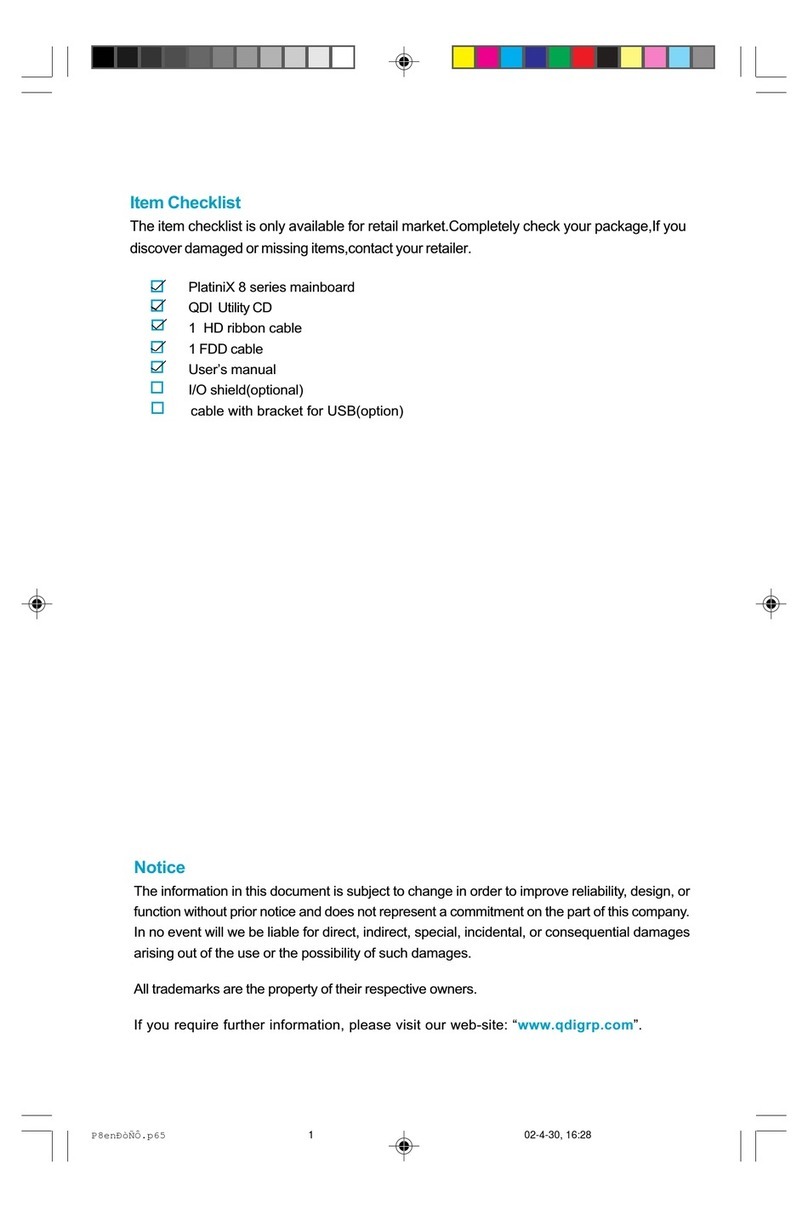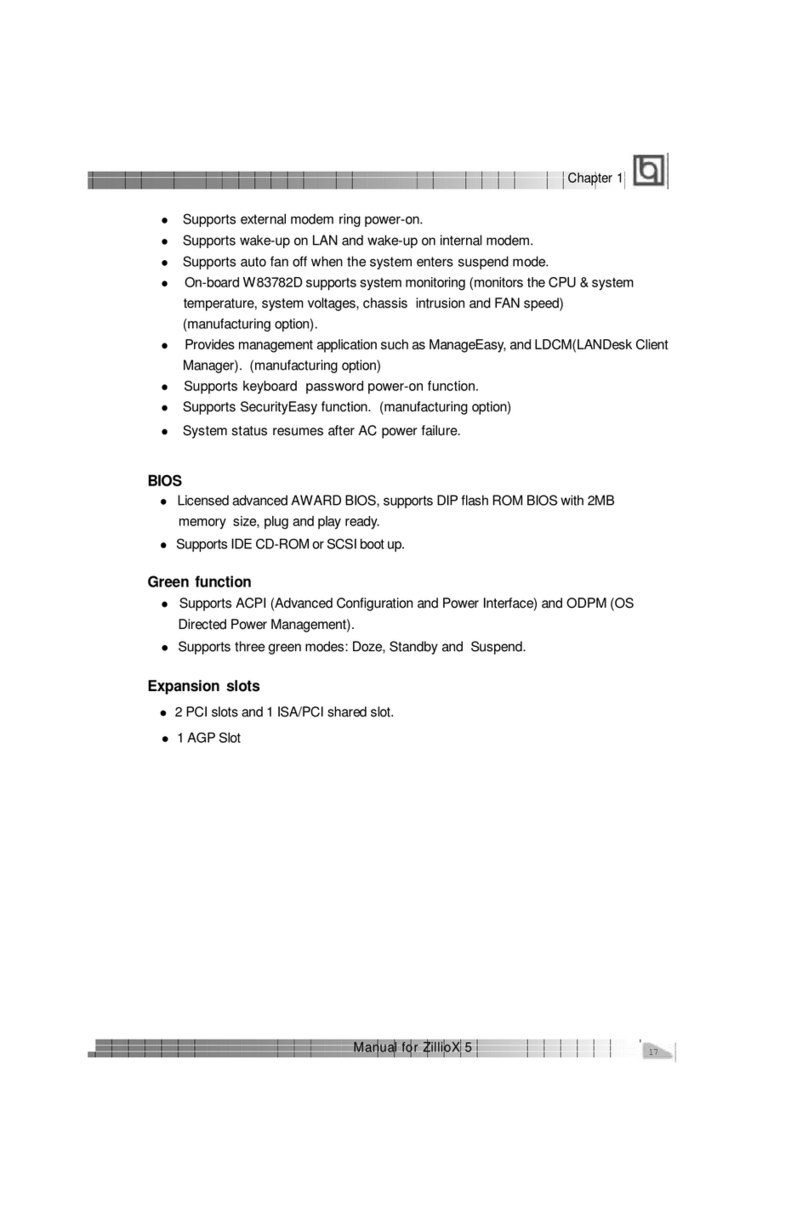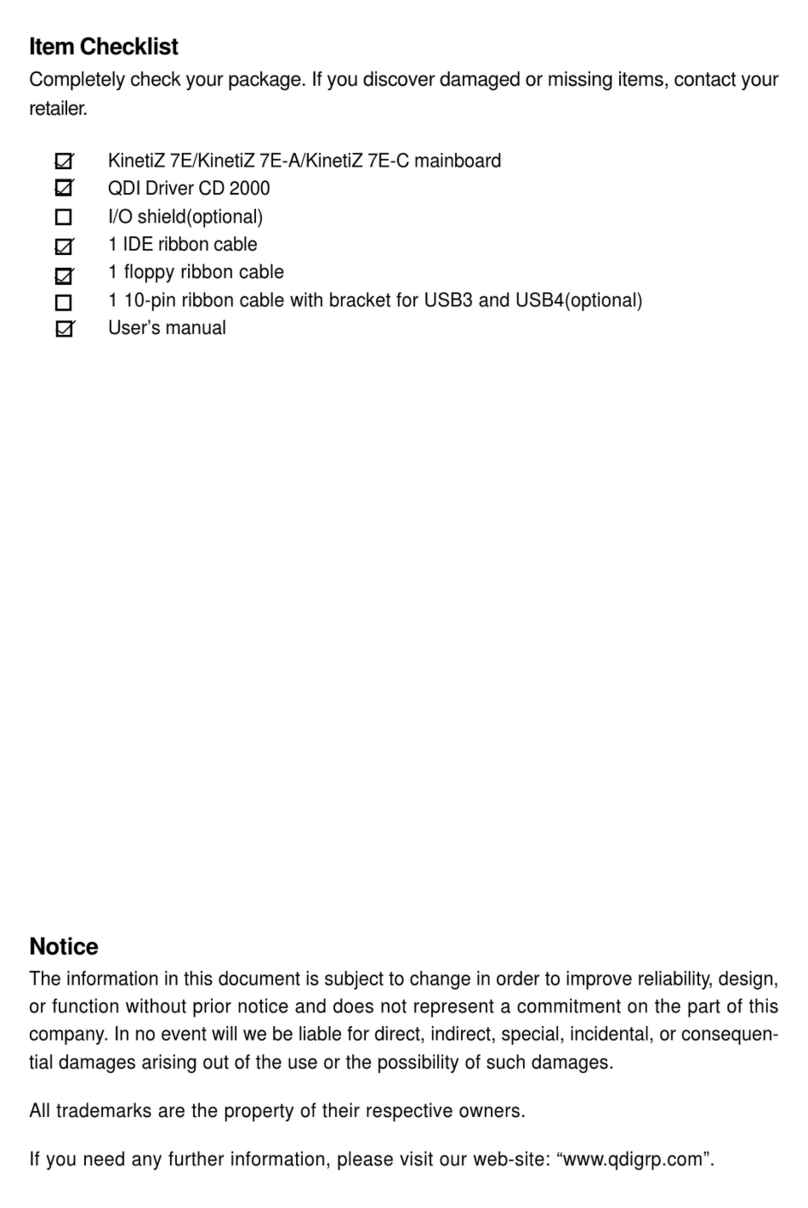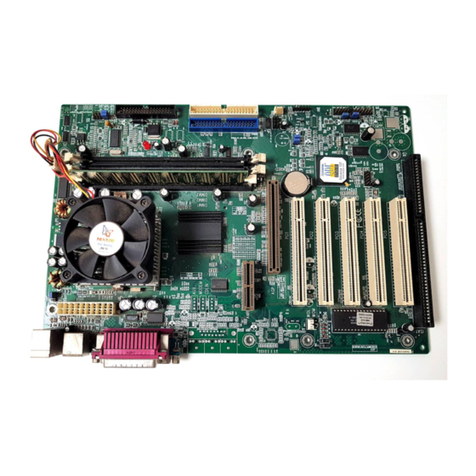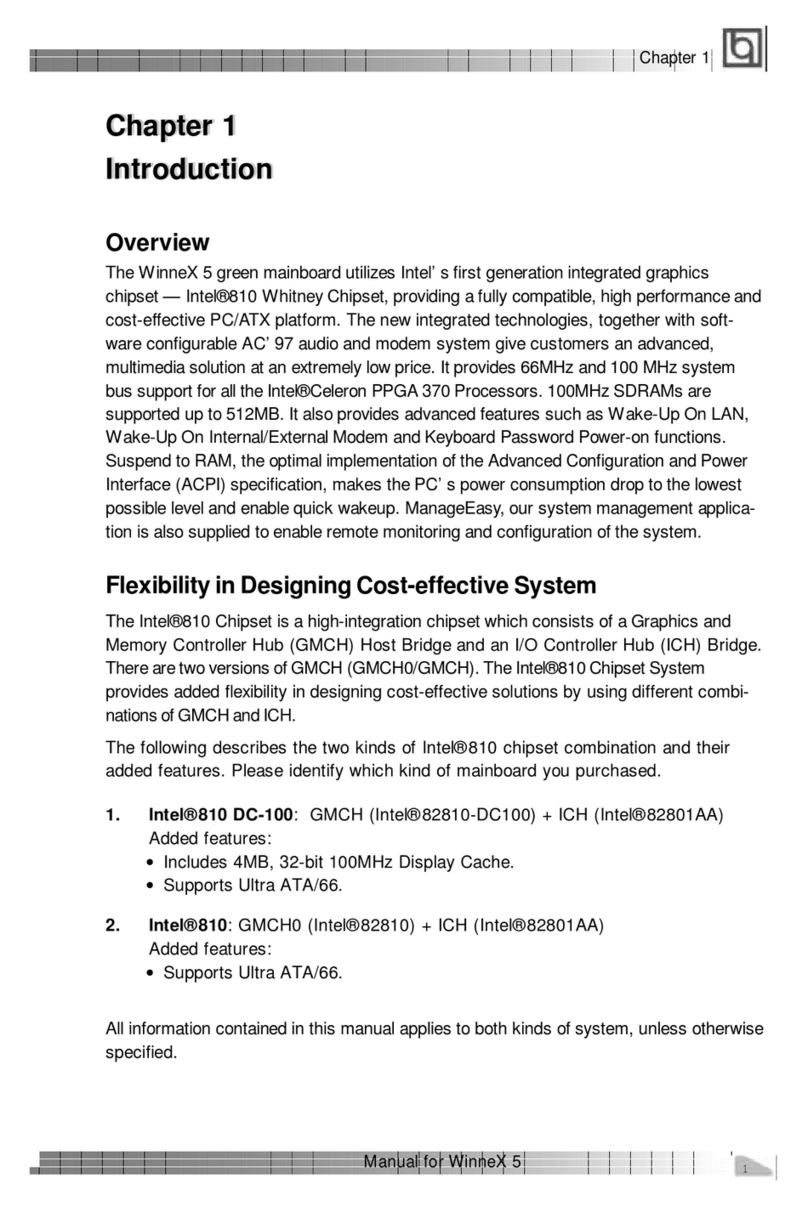
Manual for Superb 3L
Installation de la carte mère Superb 3L
1. Assurez-vous que votre ensemble est complet: carte mère, câbles IDE et FLOPPY,
noticed’utilisationetCD-ROMd’installation.
2. Vérifiez que l’alimentation est débranchée et reliez-vous à la terre par une courroie
à votre poignet. A défaut, maintenez le contact de vos deux mains avec un objet lui-
même relié à la terre, ou une partie en métal de votre système.
3. Fixez la carte mère dans le boîtier grâce aux vis fournies avec celui-ci.
4. Si votre carte mère est munie de cavaliers, placez les en fonction des options que
vous souhaitez utiliser: réglage de la fréquence du processeur si votre carte n’est
pas SpeedEasy, fonction allumage par saisie du mot de passe…(voir le manuel,
rubrique «configuration des cavaliers» pages 13 à 17)
5. Insérez le processeur dans son logement avec son ventilateur que vous
brancherezauconnecteur«CPUFAN».
6. Insérezla/lesbarrette(s)mémoiredans lesslots DIMM.
7. Installez vos éventuelles cartes PCI et AMR dans les slots prévus à cet effet (voir
pagecentrale dumanuel).
8. Branchez vos périphériques IDE et FLOPPY sur les connecteurs prévus à cet effet
grâce aux nappes fournies avec la carte. Vérifiez que le sens de branchement est
correct (liseré rouge du câble sur la broche 1 du connecteur).
9. Reliez les câbles du boîtier aux connecteurs prévus à cet effet (Connecteur
d’alimentation,LEDdemarche/arrêt,disquedur,haut-parleur…voirmanuel pages9
à12). Refermez leboîtier.
10. Branchez les périphériques externes sur les sorties du fond de panier: clavier,
sourisPS/2,périphériquesUSB,moniteur,imprimante…(voirmanuelpages7-8)
11. Lorsque tous les éléments du système sont installés physiquement, rebranchez
l’unitécentrale.
Installation du système.
1. Démarrezvotre systèmeen pressantle bouton«POWER».
2. Pressez la touche «Suppr» pour entrer dans le setup du BIOS.
3. Dans le menu «SpeedEasy CPU Setup», réglez la vitesse de votre processeur (AT-
TENTION:il estrecommandé denepassélectionnerune fréquencesupérieure à
celle de votre processeur, nous déclinons toute responsabilité pour les dommages
quienrésulteraient)
4. Effectuez les autres réglages du BIOS selon votre configuration (nous vous
conseillons fortement de maintenir les réglages par défaut afin d’éviter toute manipu-
lation hasardeuse pouvant résulter en un dysfonctionnement). Pour plus
d’informations sur les fonctions du BIOS, vous pouvez consulter la version
françaisedu manuelsurle CD-ROM.
Superb 3L
